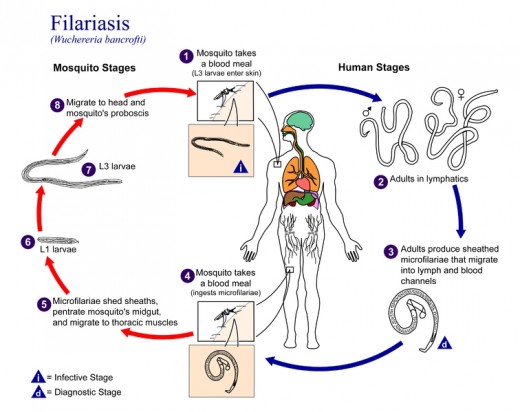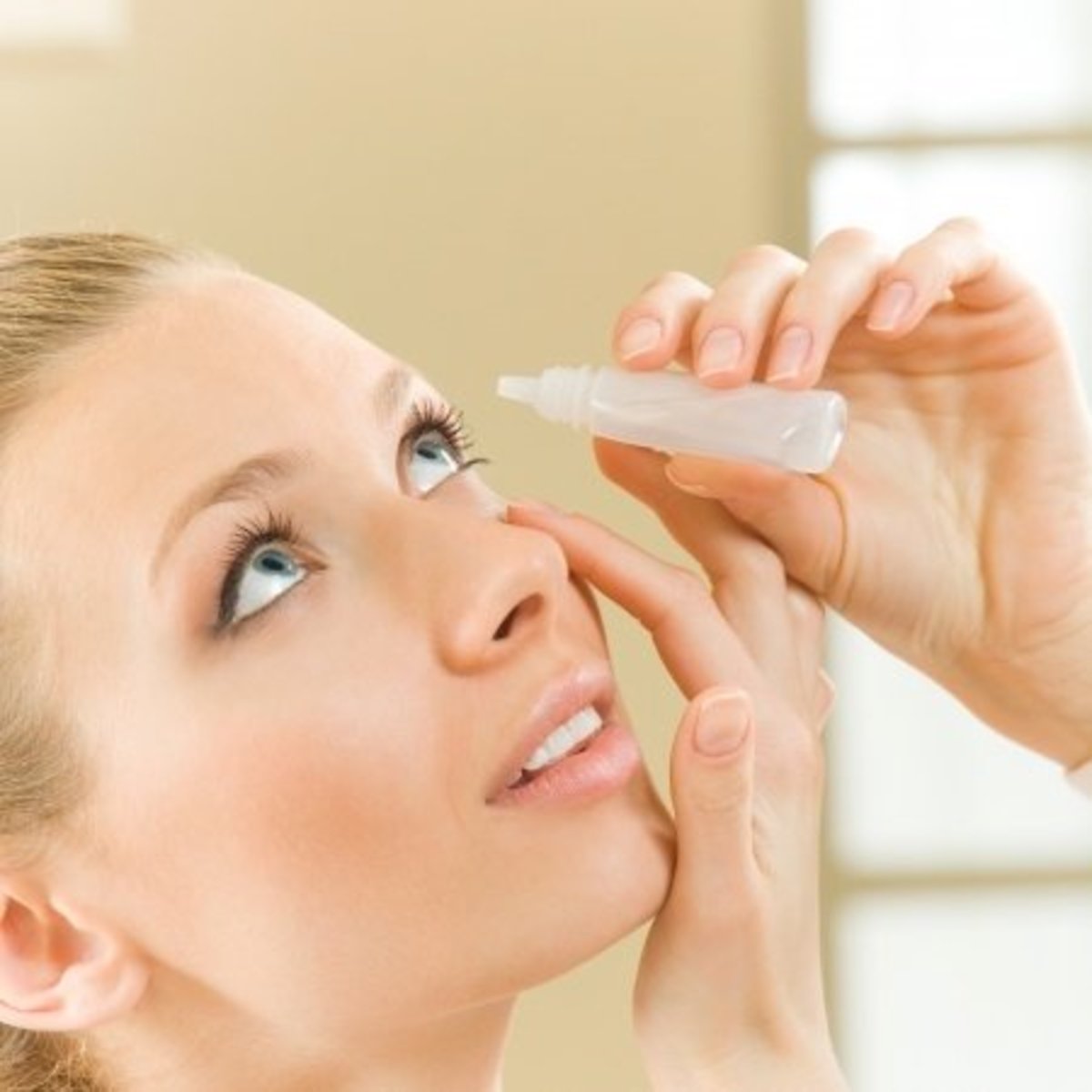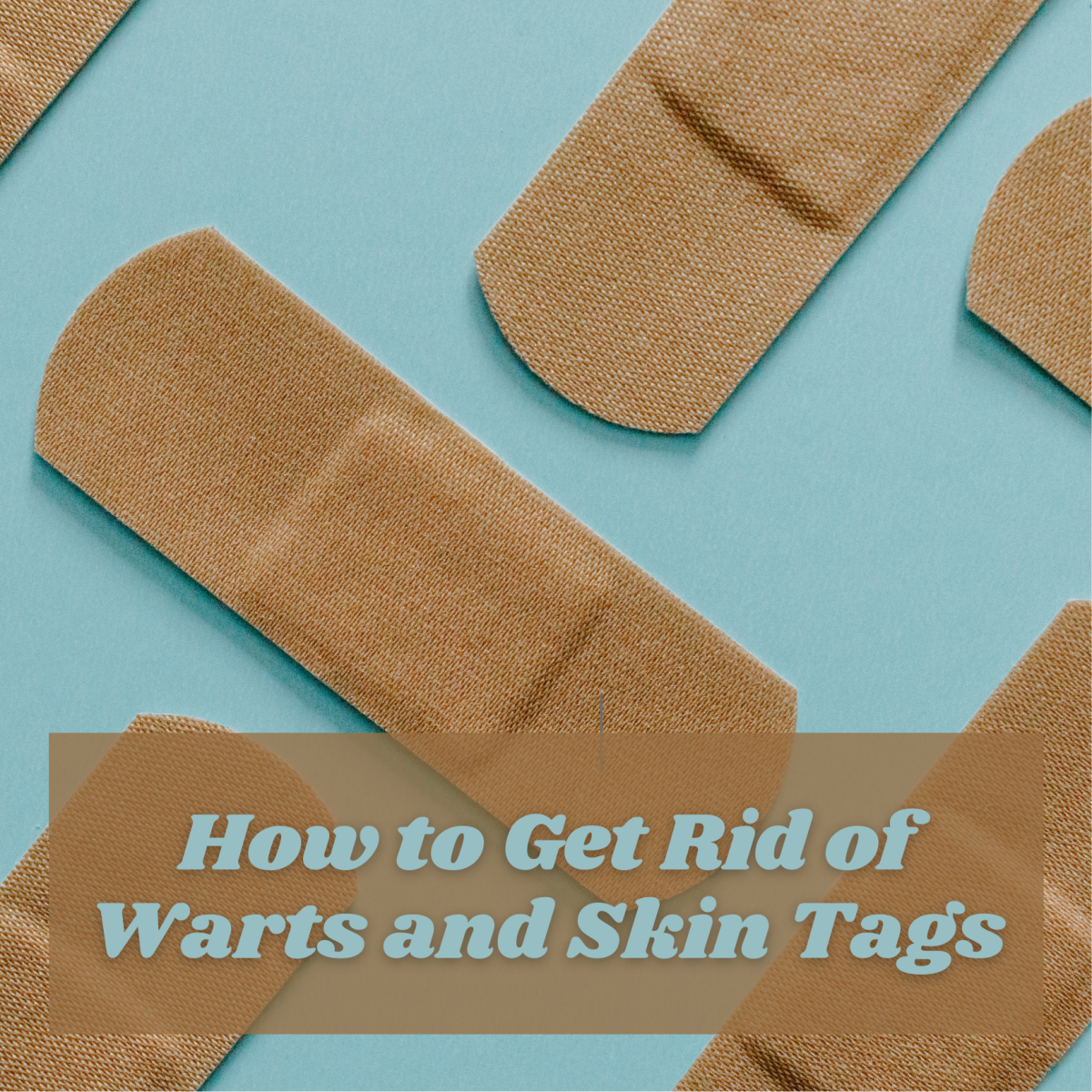Infectious Diseases: Fighting Filaria in Africa and India
Number 2 Leading Cause of Disability Worldwide
The knowledge of filaria (philaria) came to me as a shock in a high school health class, where my cohort of students at about age 16-17 was presented weekly with a mulitude of shocking conditions asa well as the consequences of high-risk behaviors and the lack of sanitation around the world.
Up until the time of viewing the documentary concerning filaria in Africa, many of us had never imagined the variety of conditions killing people in less developed nations.
The film portrayed children and adults suffering from a chronic elephantiasis, one of the end products of the filariasis that spreads through the operation of the life cycle of worms that are also called nematodes (specifically, often Wuchereria bancrofti and Brugia malayi). These worm parasites breed within mosquitoes trhat are the vectors that pass the worms as larvae from person to person via bites.
A single leg or both legs from the knees, down of these patients grew swollen nearly as large as an elephant's lower limb. An affected human foot looked especially like an elephant's foot. This condition was painful, inhibited mobility, and was fatal.
Happily, a vaccine existed for the condition. We viewed one vaccination. A nude child was placed standing on a board upon which pigeon-toed feet were drawn. As the child matched his feet to the drawing on the board to that his buttocks protruded in oppostie directions, a long, large gauge hypodermic needle was thrown like a dart into one buttock. A large container of serum was screwed into the needle and the serum was injected slowly.
Total Damages
The organization GlobalHealth.org reports that along with physical damage and loss of mobility, lymphatic filaria also results in economic and psychosocial harm and loss. The organization has found that filaria and other "neglected diseases" that have not been targeted for swift elimination in the past, have caused a total of an equivalent of 57,000,000 disability-adjusted life years (DALYs) every year. This is a lot of toal damage that can be eliminated with vaccines. Please see the reference link below.
- Home Page
The Global Health Council is the world's largest membership alliance dedicated to saving lives by improving health throughout the world. Our Mission is to promote better health around the world by assisting all who work for improvement and equity in
Neglected Diseases
I heard no more about flaria until I studied preventive medicine, where I was found a more complete story. Filaria is often placed into the category of Neglected Diseases, although, estimates in the 2000s claimed that it could be eradicated globally for $1 USD per at-risk person. In addition to the lymphatic type of the disease that results in elephantaiasis, we have a subcutaneous type in which worms invade fat under the skin and a severe cavity type in which worms invade other body parts -- and a total of 9 varieties of nematodes are at fault.
The diease called Lymphatic Filariasis (LF) can exist undetected the human body for longer than 10 years. In 2010, the disease is thought to put at risk one billion individuals globally, in 80 countries and not only Africa and India. However, 1/3 of the logged cases exist in Africa and 1/3 in India.
The incidence of the disease is increasing as a result of fast city growth without adequate planning in sites located in subtropical and tropical areas of the world, including Central and South America - especially Brazil according to some sources, South and Southeast Asia, Pacific Islands
The disease can progress after 10 years of slience into elephantiasis, also called Malabar Leg. The worms (parasites) interfere with the lymphatric system of humans and results in sweliing called edema. The disease also causes swollen breasts, genital injury (most often to males), and thickly hardened skin. Other symptoms can manifest as well and can vary according to which vareity of nematode is at work.
Neglected Diseases
Elimination of Filaria from 1998 to 2020
The World Health Organization (WHO) created the Global Alliance to Eliminate Lymphatic Filariasis with the mission to eliminate filaria as a health problem by 2020 (see the reference links below). They estimate that 120 million victims exist in 80+ countries and that one billion people, 20% of the global population of 2010, are at risk. The number of patients is growing. However, significant progress has been shown through in 2008 the success of donated vaccines and successful prevention among 6,600,000 children. Medications administered as vaccines are required for 6 years per the WHO and have usually included albendazole in combination with either DEC or Mectizan®.
- WHO | Programme
The Global Programme to Eliminate Lymphatic Filariasis.
From the CDC: Worm Life Cycle in Filaria

Life Cycle Summary
FIVE STAGES
- Heterosexual worms mate and the female births thousands of live microfilariae (tiny larvae that look like threads).
- The mosquito (the vector insect) takes up the tiny creatures in ingested blood at night while biting a human
- The microfilariae molt inside the insect and develop into 3rd-stage larvae.
- The mosquito ingests blood from a second human and injects the infectious larvae into the dermis of the skin of the human.
- One year passes, more or less. The larvae molt into 2 additional stages to become adult worms.
For Future Study
Advances in the study of filaria are ongoing. Scientists have completed the full genome for one of the variety of worms responsible for filaria infection and disability, with the information useful for further preventing their infestation of humans and animals. Animals affected have included reported cattle, dogs, and sheep. In addition, at least one form of elephantiasis is thought to be unrelated to worms altogether, but the result of irritants in the local soil.
The swelling in some cases of elephantiasis has been eased by an antibiotic injection, while others have been treated with surgery. Some cases of swollen feet have been treated with consistent wearing of shoes, as in cases of other types of post-surgery foot swelling. It seems that no treatment for any type of the elephantiasis is very effective overall, and that prevention through vaccination and protection against mosquito bites are the preferred actions.









